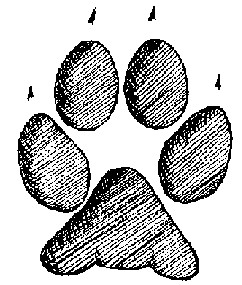NOTE: This cache is accessed via a pedestrian
overpass. It is not on or near the railroad tracks.
Stay on the walkway to get to the coordinates and retrieve the
cache. This cache is wheelchair accessible, meaning you can
approach GZ and retrieve the cache from a seated position while in
a wheelchair.
Good Luck, and BYOP.
This footbridge is a
remaining portion of what was once the employee entrance to the
Koppers Coke plant, located east of these coordinates and extending
to Lexington Ave. My grandfather worked here from the 1930’s
to when he retired about 1962. If you walk across this
original footbridge and stand at the coordinates, you are where
there once was a stairway heading down to the plant’s timeclock
building just to the east. We used to go wait for him to get
out of work and headed down the steps as soon as we saw him heading
towards the timeclock building. There was an extension to
this footbridge to the north that is no longer here.
Under these bridges were many railroad switching tracks used to
move coal and coke around the site. All are gone, except
two. There was a steam locomotive operating below here that
did the switching work in the yard. Whenever we would see it
coming toward us, we would run to get directly above the track it
was running on to be in the path of the smokestack.
At one time there was a huge coal pile located east of here,
extending all the way down to Lexington Ave. and a crane the size
of those used in the Iron mines to load the coal.
Today, we know this area as Energy Park.
What is Coke?
Coke is the residue of the carbonization of bituminous coal; and is
the burden support, fuel and reductant in blast furnaces. It is
primarily used in the iron and steel making
industries.
And
finally, from the EPA's Superfund
website:
KOPPERS COKE
EPA ID# MND000819359
Last Updated: December, 2006
Site Description
The Koppers Coke (Koppers) site is approximately 38 acres and is
located in St. Paul, Ramsey County, Minnesota. Koppers Company
operated a coking facility at the site from 1917 to 1979, producing
foundry coke and various byproducts such as coal tars and coal tar
distillates. The company demolished all standing structures and
removed storage tanks in 1981. The site was acquired in 1981 by the
Port Authority for the St. Paul Energy Park. Office and light
industrial buildings now occupy the site. Approximately 15,400
residents live within one mile of the site. The nearest residence
is 100 feet away, and Como Park, a recreational facility, is
three-quarters mile from the site.
Site Responsibility
This site was selected by the U.S. EPA and the State of Minnesota
as a Deferral Pilot site and therefore is being addressed through
state and potentially responsible parties' actions.
Threats and Contaminants
Storage and disposal practices along with the dumping of wastes on
the land surface and various leaks and spills resulted in
contamination of both soil and groundwater with volatile organic
compounds (VOCs), semi-VOCs, polynuclear aromatic hydrocarbons
(PNAs), metals, and cyanide compounds.
Cleanup Progress
Koppers removed contaminated soils in the 1980s and early 1990s. In
fall 1982, before the site was listed on the National Priorities
List (NPL), Koppers disposed of about 240,000 gallons of residue in
20 tanks in a federally-approved facility, and approximately 21,600
cubic yards of contaminated soils were excavated and disposed. On
March 25, 1986, the Minnesota Pollution Control Agency (MPCA)
Citizen's Board issued a request for response action to Koppers to
conduct a remedial investigation/feasibility study (RI/FS) and
implement a cleanup plan. On April 21, 1994, the record of decision
(ROD) was issued, requiring confirmation of soil removal and
implementation of in-situ bioremediation of groundwater. This
remedy is currently being implemented. An in-situ pilot system
began operation in February 1996. The evaluation of the in-situ
pilot system was completed in 1997, and the data was used to limit
the scope of the remedial action (RA) to the current operation
location onsite. The monitoring well network is being enhanced as
part of the RA for the site. The enhancements were completed in
1998; the long-term monitoring activities began in 1998. The data
will be used to monitor the effectiveness at which natural
attenuation will degrade the relatively stable contaminant plume
which exists in the glacial aquifer in the vicinity of the
site. A Preliminary Close-out Report was signed in July of
1998 documenting the completion of the remedial action at the
site. A five-year review was conducted on September 19, 2003.
The five-year review stated the remedy remains protective of human
health and the environment.
A second 5 year review is scheduled to be completed by the State of
Minnesota in 2008 .

Grey Wolf's Stamp of
Approval.